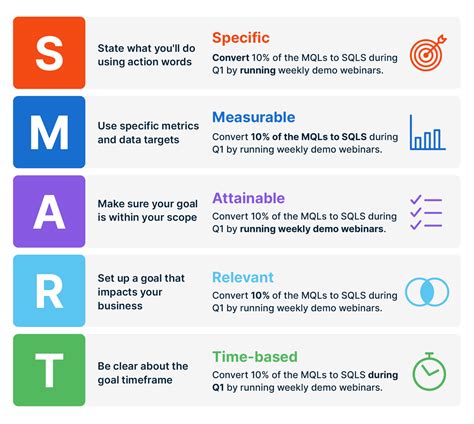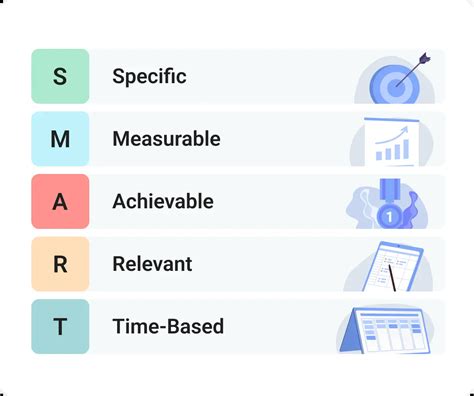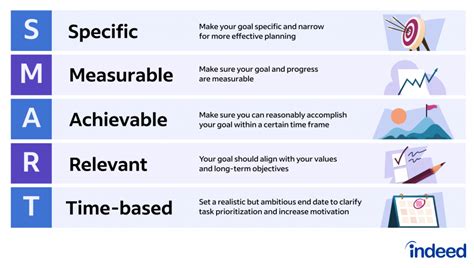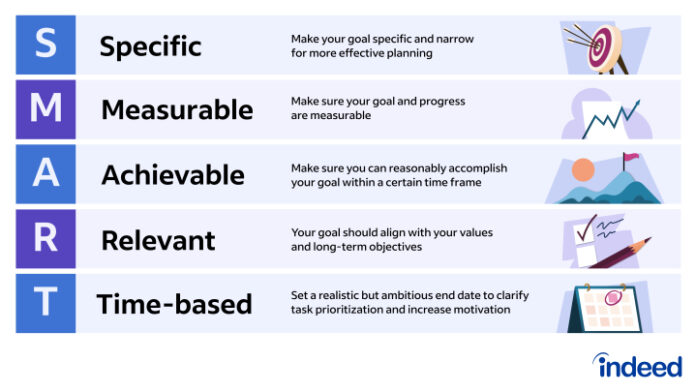Setting goals is essential for personal and professional growth, but not all goals are created equal. To truly master the art of goal-setting, it’s important to use a structured approach like the SMART method. SMART goals—Specific, Measurable, Achievable, Relevant, and Time-bound—provide a clear and actionable framework that increases your chances of success. By understanding and applying each component of SMART, you can create goals that are not only realistic but also aligned with your aspirations. This guide will explore the importance of SMART goals, offering techniques to define, measure, and achieve your objectives effectively, ensuring you stay motivated and on track.
weninsure.xyz will take you through an extensive exploration of this topic.
1. Why SMART Goals Matter: Understanding the Benefits of Structured Goal Setting
SMART goals matter because they provide a clear, structured path to achieving your aspirations. Without a defined approach, goals can often remain vague, leading to frustration and a lack of progress. The SMART framework—Specific, Measurable, Achievable, Relevant, and Time-bound—offers a systematic method to set and accomplish goals with precision and purpose. By breaking down your objectives into these components, you create a roadmap that not only clarifies what you want to achieve but also how to get there. This structured approach helps you stay focused, track your progress, and maintain motivation. Ultimately, SMART goals transform your ambitions into actionable steps, increasing the likelihood of success and ensuring that your efforts are directed toward meaningful outcomes. Whether you’re aiming for personal growth or professional advancement, SMART goals provide the foundation you need to make your dreams a reality, turning abstract ideas into concrete achievements.

2. How to Define Specific Goals: Narrowing Down Your Objectives
Defining specific goals is the first and most crucial step in the SMART framework. A specific goal is clear, detailed, and unambiguous, providing a solid foundation for your efforts. When setting a specific goal, ask yourself the “what,” “why,” and “how” questions: What exactly do you want to achieve? Why is this goal important? How will you accomplish it? By answering these questions, you can narrow down your objectives and focus on what truly matters.
For example, instead of setting a vague goal like “get fit,” a specific goal would be “lose 10 pounds in three months by exercising four times a week and following a balanced diet.” This goal is detailed and leaves no room for misinterpretation, making it easier to create a plan of action.
Specificity in goal-setting helps you concentrate your efforts, avoid distractions, and maintain motivation. It also makes it easier to measure your progress and recognize when you’ve achieved your goal. By being precise in your objectives, you lay the groundwork for a successful outcome.

3. How to Ensure Measurable Progress: Tracking Your Success
Ensuring measurable progress is key to maintaining momentum and achieving your goals. A measurable goal includes clear criteria for tracking progress, helping you stay on course and recognize your accomplishments along the way. To make your goals measurable, define specific indicators of success that can be quantified or assessed objectively.
For instance, if your goal is to save money, a measurable version would be “save $500 each month for six months.” This goal is not only specific but also provides a concrete benchmark to evaluate your progress. Regularly reviewing your progress against these benchmarks allows you to see how far you’ve come and adjust your approach if necessary.
Measuring your progress keeps you accountable and motivated, as it provides tangible evidence of your efforts. It also helps you stay focused on the end result, breaking down what may seem like a daunting task into manageable steps. By setting measurable goals, you create a clear pathway to success, ensuring that every action you take brings you closer to your ultimate objective.

4. What Makes a Goal Achievable: Balancing Ambition and Reality
Setting achievable goals is about finding the right balance between ambition and reality. While it’s important to challenge yourself, your goals must also be realistic and attainable within your current circumstances. An achievable goal is one that stretches your abilities but doesn’t set you up for failure.
To determine if a goal is achievable, consider your resources, time, skills, and any potential obstacles. Ask yourself: Do you have the tools and knowledge needed to accomplish this goal? Are there any constraints that might hinder your progress? For example, setting a goal to learn a new language fluently in one month is likely unrealistic for most people. However, setting a goal to learn and practice basic conversational phrases within three months is more attainable and still ambitious.
Achievable goals keep you motivated because they provide a sense of progress and accomplishment. If your goals are too far out of reach, you might become discouraged and lose momentum. On the other hand, goals that are too easy can lead to complacency. Striking the right balance ensures that you are continuously growing and improving without feeling overwhelmed.
By setting achievable goals, you create a roadmap that is both challenging and within your grasp, making your aspirations more likely to become reality.
5. What it Takes to Stay Relevant and Time-bound: Prioritizing and Scheduling for Success
To ensure your goals are relevant and time-bound, it’s essential to align them with your broader objectives and establish a clear timeline for completion. A relevant goal is one that fits within the larger context of your life or career, ensuring that your efforts contribute meaningfully to your long-term aspirations. Ask yourself if the goal aligns with your current needs, values, and priorities. For instance, pursuing a new certification might be relevant if it enhances your career prospects, but less so if it distracts from other critical projects.
Being time-bound means setting deadlines that create a sense of urgency and keep you focused. Without a timeframe, even the most specific and achievable goals can lose momentum. For example, setting a goal to “increase sales by 20%” is effective only if paired with a deadline like “within the next quarter.”
Prioritizing your goals and scheduling them into your daily routine helps ensure that they remain relevant and time-bound. By breaking down your goals into smaller, time-specific tasks, you can track your progress and stay motivated. This approach not only keeps you on track but also helps you adjust your efforts as needed to achieve success within the set timeframe.
Mastering the art of goal-setting through the SMART framework empowers you to achieve your personal and professional aspirations with clarity and focus. By setting Specific, Measurable, Achievable, Relevant, and Time-bound goals, you create a structured pathway that transforms your ambitions into actionable steps. This approach not only keeps you motivated but also ensures that your efforts are directed toward meaningful and attainable outcomes. With SMART goals, you can confidently pursue and realize your objectives, turning your dreams into tangible successes.
weninsure.xyz

